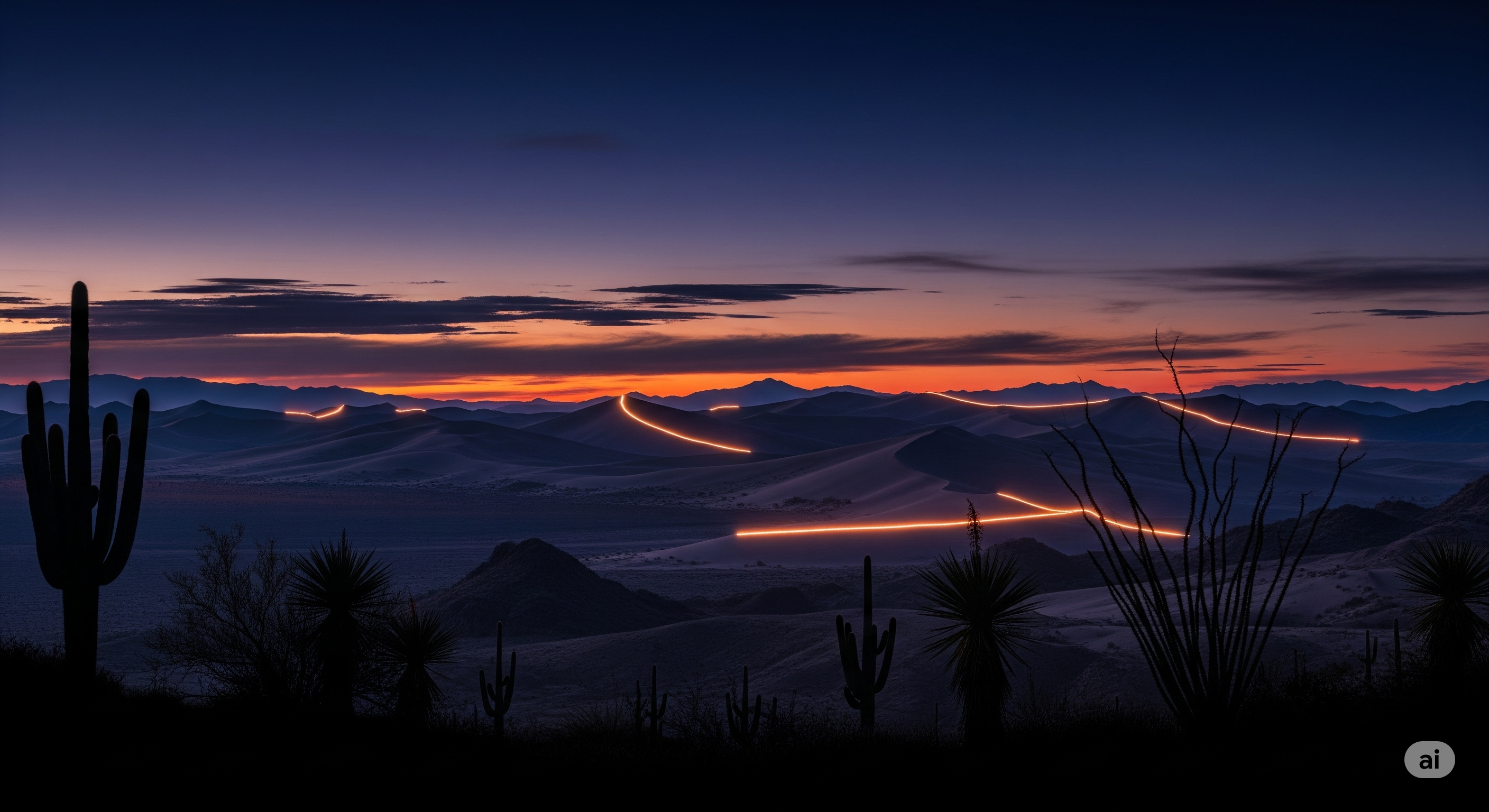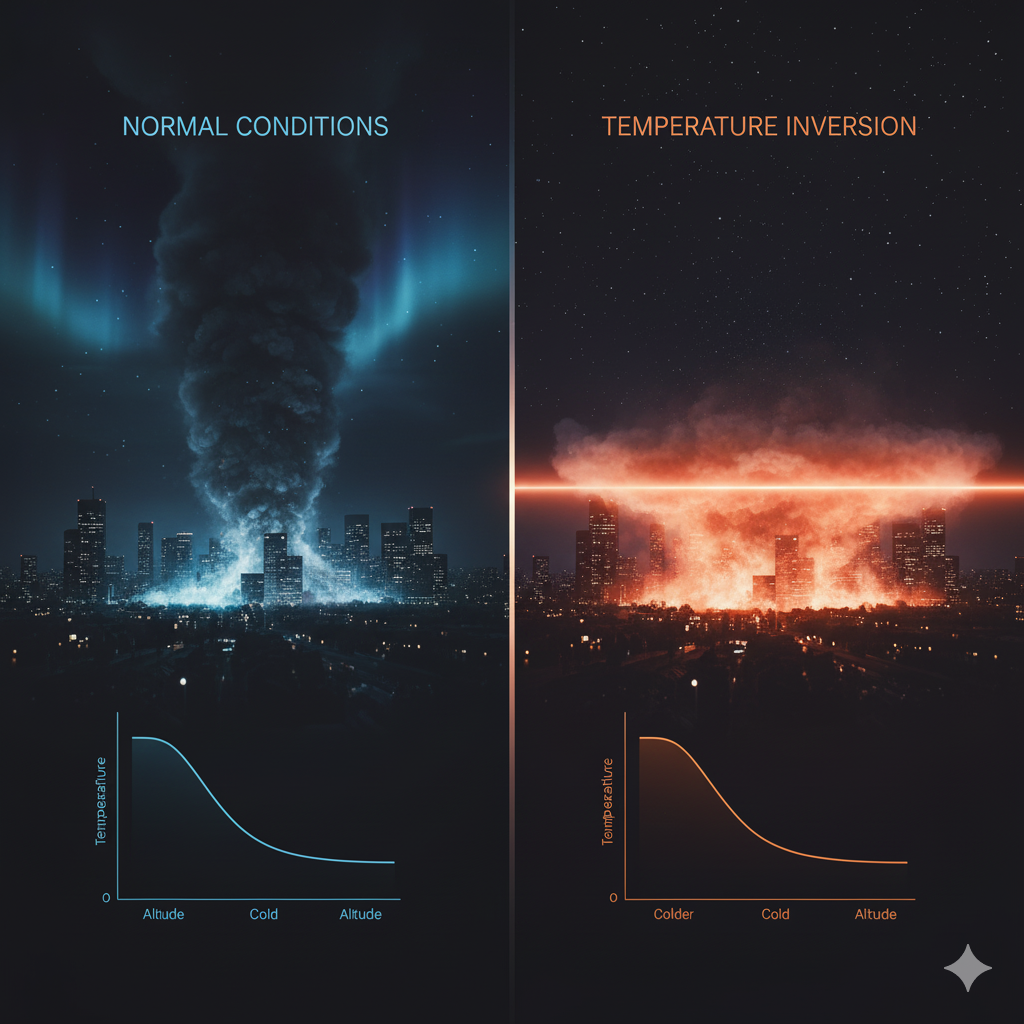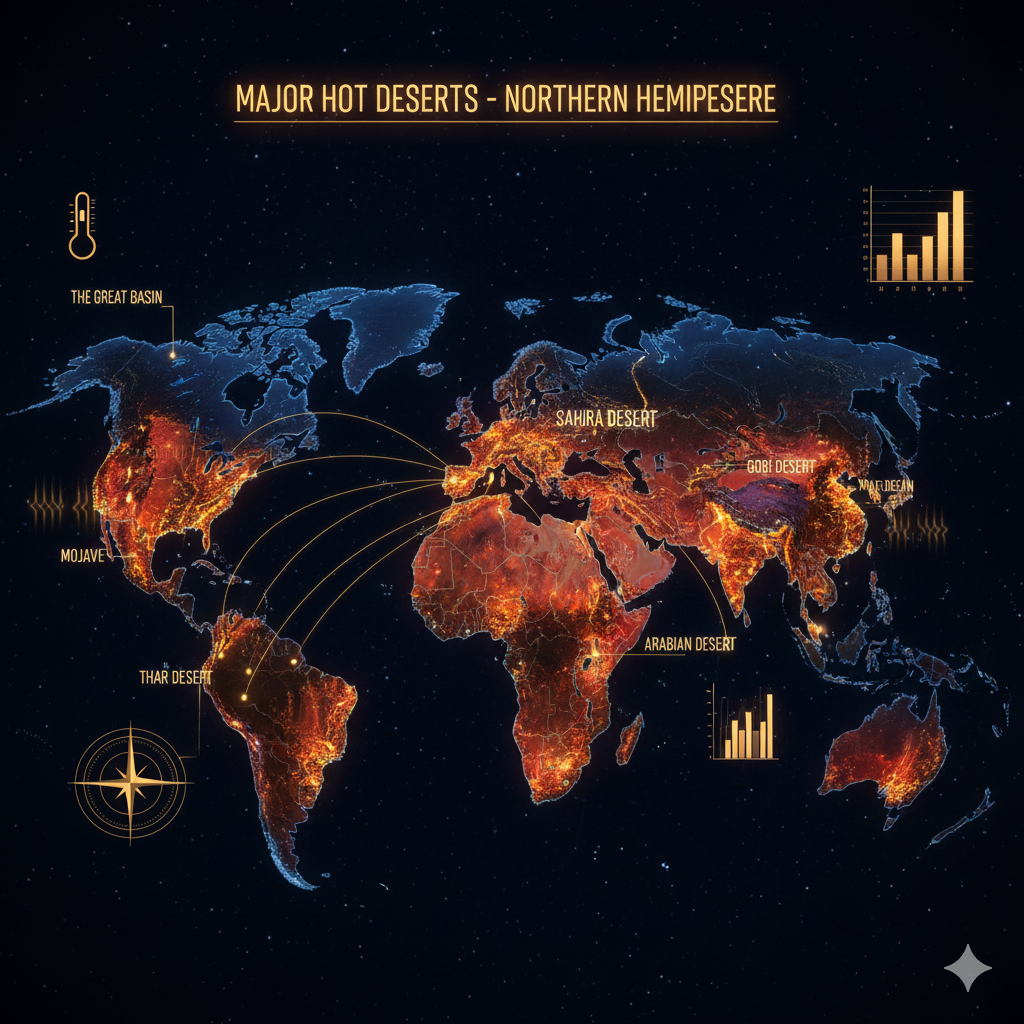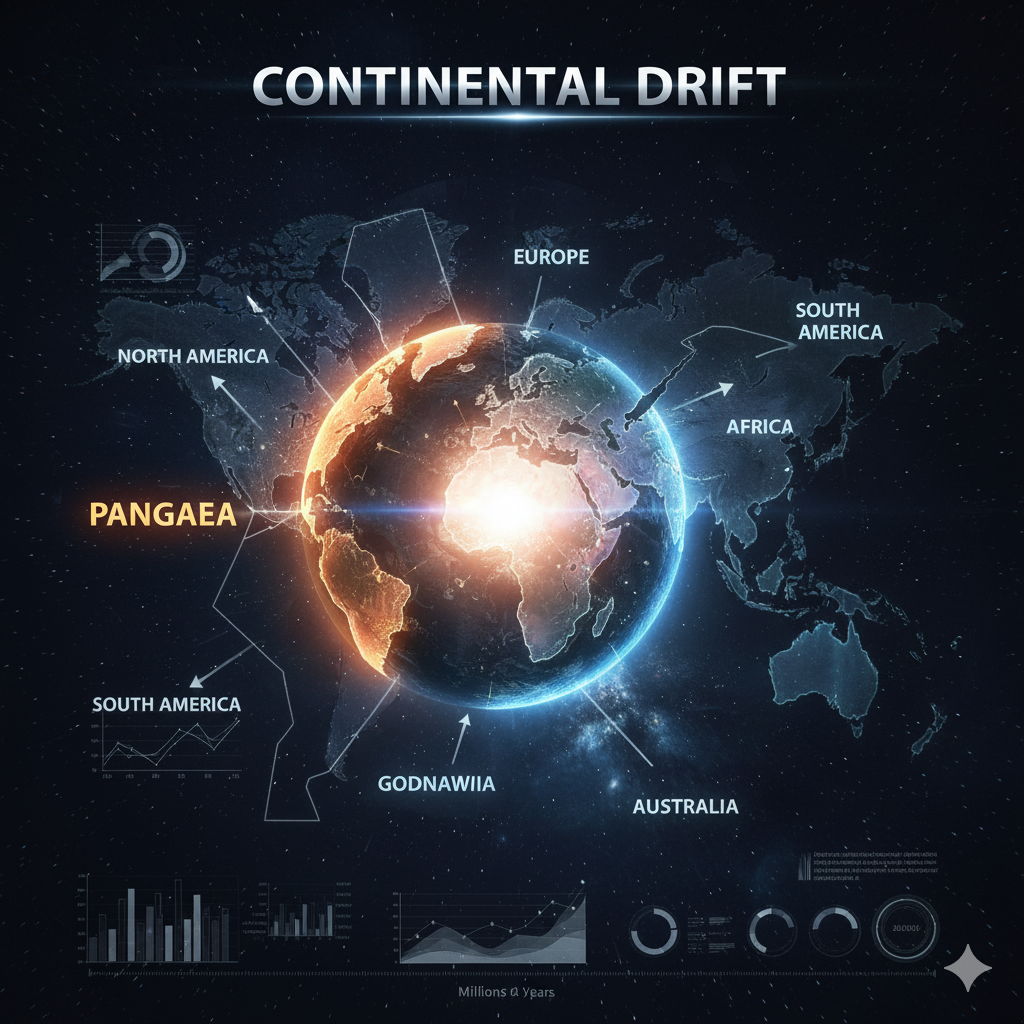Introduction
When people imagine the United States, they often think of vast cities, fertile farmlands, and industrial centers. Yet, the country is also home to some of the world’s most fascinating desert landscapes. These deserts—the Mojave, Sonoran, Great Basin, and Chihuahuan—cover a significant portion of the southwestern United States. Each desert has its own unique climate, ecology, and human history, yet they all share the common features of aridity, extreme temperatures, and specialized adaptations by plants, animals, and people.
Deserts in the USA are not just barren lands; they are dynamic ecosystems that have influenced settlement patterns, resource use, cultural development, and modern economic activities. Understanding their formation, climate characteristics, and human adaptations provides insights into the relationship between geography and society.
1. Formation of U.S. Deserts
Deserts are defined by low precipitation (less than 25 cm annually), high evaporation rates, and unique landforms shaped by wind and water erosion. The four major deserts of the United States owe their formation to several geological and climatic processes:
a) Rain Shadow Effect
- The Sierra Nevada and Rocky Mountains block moist air coming from the Pacific Ocean.
- As the air rises over the mountains, it cools and drops moisture. By the time it descends on the leeward side, it is dry, creating arid zones.
b) Subtropical High Pressure
- Persistent high-pressure systems over the subtropics prevent cloud formation, leading to dry conditions in the southwestern states.
c) Continental Interior Location
- Being far from oceans, some deserts receive little moisture due to distance from major water bodies.
d) Geological History
- Ancient inland seas, tectonic uplift, and volcanic activity shaped basins, salt flats, and desert valleys.
Thus, the deserts of the USA are the outcome of a mix of geological evolution and climatic patterns.
2. Overview of Major U.S. Deserts
A. The Mojave Desert
- Location: Primarily southeastern California and parts of Nevada, Utah, and Arizona.
- Area: ~124,000 sq. km.
- Climate: Hot desert; less than 150 mm rainfall annually; summer temperatures can exceed 49°C (120°F).
- Unique Feature: Home to Death Valley, the hottest and driest place in North America.
B. The Sonoran Desert
- Location: Covers large parts of Arizona, California, and extends into northwestern Mexico.
- Area: ~310,000 sq. km.
- Climate: Hot desert; two rainy seasons (winter and summer monsoon); temperatures can reach 47°C (117°F).
- Unique Feature: Famous for the Saguaro cactus, an iconic symbol of the American Southwest.
C. The Great Basin Desert
- Location: Nevada, western Utah, parts of Oregon, Idaho, and California.
- Area: ~492,000 sq. km, making it the largest U.S. desert.
- Climate: Cold desert; receives snow in winter, temperatures often below freezing; ~200 mm precipitation annually.
- Unique Feature: Characterized by basin-and-range topography and salt flats.
D. The Chihuahuan Desert
- Location: Southern New Mexico, western Texas, southeastern Arizona, extending into northern Mexico.
- Area: ~362,000 sq. km.
- Climate: Hot desert; semi-arid with 150–400 mm rainfall annually; summer rainfall from monsoons.
- Unique Feature: Noted for grasslands and diverse flora, including agave and yucca plants.
3. Climate Characteristics of U.S. Deserts
Common Features
- Low Precipitation: Annual rainfall often less than 25 cm.
- Temperature Extremes: Hot daytime temperatures, cold nights.
- High Evaporation: Water quickly evaporates, making moisture scarce.
- Sparse Vegetation: Specialized plants adapted to conserve water.
Distinct Differences
- Mojave Desert – Extremely hot, driest of all U.S. deserts.
- Sonoran Desert – Unique for its bimodal rainfall (two rainy seasons).
- Great Basin Desert – Cold desert with snowy winters.
- Chihuahuan Desert – More rainfall than others, supports grasslands.
4. Human Adaptation to U.S. Deserts
Humans have lived in desert regions for thousands of years, developing unique strategies to survive and thrive.
a) Indigenous Adaptations
- Native tribes like the Pueblo, Navajo, and Apache developed irrigation systems and adobe housing.
- Cultural practices respected ecological limits.
b) Modern Settlements
- Urban centers like Las Vegas, Phoenix, Tucson, and El Paso grew in desert regions due to mining, agriculture, and tourism.
- Advanced engineering (aqueducts, dams, canals) made desert living possible.
c) Agriculture
- Irrigation from rivers (Colorado River, Rio Grande) supports crops like cotton, citrus, alfalfa, and vegetables.
- Use of drip irrigation and groundwater extraction.
d) Energy Development
- Deserts provide abundant solar and wind energy potential.
- Solar farms in the Mojave and Sonoran deserts contribute to renewable energy production.
e) Tourism & Economy
- Deserts attract millions of tourists each year for national parks, hiking, and cultural heritage sites.
- Death Valley, Grand Canyon (on Sonoran boundary), and White Sands (Chihuahuan Desert) are world-famous attractions.
5. Case Studies of Human–Desert Interaction
i) Las Vegas (Mojave Desert)
- Grew rapidly despite harsh climate.
- Relies on Hoover Dam and Lake Mead for water supply.
- Tourism and entertainment industries dominate economy.
ii) Phoenix (Sonoran Desert)
- Expanded agriculture with advanced irrigation from the Salt and Gila rivers.
- Now a major metropolitan hub with high water demand.
iii) Great Basin Mining Towns
- Rich in minerals like silver and gold.
- Mining shaped settlement patterns in Nevada and Utah.
iv) Border Communities in Chihuahuan Desert
- El Paso and Ciudad Juárez thrive as trade hubs despite scarce water.
6. Environmental Challenges in U.S. Deserts
a) Water Scarcity
- Over-dependence on rivers like the Colorado has led to water crises.
b) Urbanization Pressure
- Rapid population growth in cities like Phoenix and Las Vegas strains limited resources.
c) Desertification
- Overgrazing and poor land management expand arid zones.
d) Biodiversity Loss
- Habitat destruction threatens species like desert tortoises and pronghorn antelope.
e) Climate Change
- Rising temperatures worsen droughts, water shortages, and heatwaves.
7. Conservation and Sustainable Use
a) Water Management
- Initiatives to conserve water through recycling, desalination, and efficient irrigation.
b) Protected Areas
- National Parks like Death Valley, Joshua Tree, Saguaro, and Big Bend preserve desert ecosystems.
c) Renewable Energy
- Expanding solar and wind farms reduce reliance on fossil fuels.
d) Indigenous Knowledge
- Integrating traditional practices of water conservation and land stewardship.
8. Comparative Overview of the Four Deserts
| Desert | Climate Type | Key Feature | Human Adaptation Example |
|---|---|---|---|
| Mojave | Hot, driest | Death Valley | Las Vegas urban growth |
| Sonoran | Hot, bimodal rainfall | Saguaro cactus | Phoenix irrigation farming |
| Great Basin | Cold desert | Basin-and-range topography | Mining towns |
| Chihuahuan | Semi-arid, grasslands | Agave, yucca | El Paso border economy |
Conclusion
The deserts of the USA—Mojave, Sonoran, Great Basin, and Chihuahuan—are landscapes of extremes. Though harsh, they have sustained indigenous cultures, modern cities, agriculture, mining, and renewable energy development. Their climates, shaped by unique geological and atmospheric conditions, present challenges of water scarcity, biodiversity loss, and urban growth.
Yet, human ingenuity—through irrigation systems, renewable energy, tourism, and conservation efforts—demonstrates the ability to adapt to and benefit from desert environments. As climate change intensifies pressures on these fragile ecosystems, sustainable management and ecological awareness will be key to ensuring that the deserts of the USA remain not just habitable, but valuable contributors to the nation’s ecological and economic systems.




